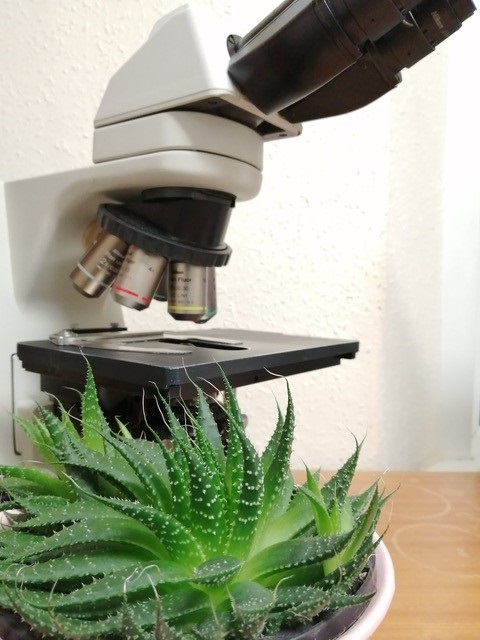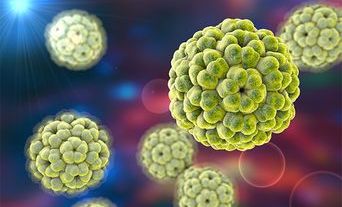Founding of the Green Team
In 2021, the British Society of Veterinary Pathologists (BSVP), inspired by the leadership shown by the Royal College of Pathologists, the NHS and Vet Sustain, formed the BSVP Green Team. The Green Team were tasked with exploring the challenges surrounding sustainability in veterinary pathology and how the vet path community might work together to improve sustainability. It was envisaged that the work of this group would include (but would not be limited to), the development of a webpage resource on sustainability within our profession for sharing experiences, promoting good practice and fostering links with other green groups (e.g. Vet Sustain).
The BSVP Green Team draws members from across the profession including veterinary pathologists in commercial diagnostic laboratories, universities and toxicological research, and veterinary pathology residents in training.
The BSVP Green Team draws members from across the profession including veterinary pathologists in commercial diagnostic laboratories, universities and toxicological research, and veterinary pathology residents in training. There is a lot of information available on sustainability, but navigating this material to find practical, feasible suggestions for change within the UK veterinary pathology context is our goal.
Improving sustainability in veterinary pathology
Historically, the first response to raising the spectre of sustainability in the pathology setting is ‘we can’t do anything about the chemicals’, shutting down all further conversation. However, as we all know, the carbon footprint of any business involves so much more than just ‘the chemicals’.
Leaving aside the spectre of the chemicals, there are many actions laboratories can take to reduce their carbon footprint, promote a cleaner heathier environment for humans and support wildlife and biodiversity. This includes changing the ways we work – reducing our energy usage, promoting the use of renewable sources, considering what we eat and its source, reducing waste and promoting the use of recyclables.
Sustainability frameworks and programmes
Many laboratories already have programmes in place to address general issues such as waste and energy. Some have adopted frameworks for laboratories pursuing sustainability such as LEAN (Laboratory Efficiency Action Network), which is coordinated by the University of Bristol, and LEAF (Laboratory Efficiency Assessment Framework), which is run by University College London. Many veterinary practices have adopted a programme developed by Investors in the Environment. There is just so much that can be done, ranging from support for employees who are cycling or travelling by public transport, putting up swift nest boxes on the building(s), to planting wildflowers on any available ground.
There is just so much that can be done, ranging from support for employees who are cycling or travelling by public transport, putting up swift nest boxes on the building(s), to planting wildflowers on any available ground.
Chemicals
Still, one must ask – what about those chemicals? There is no doubt that this is a big issue that receives lots of attention. The two biggest on the block are probably formalin and xylene.
Formalin
Formalin has served as the routine tissue fixative for over 100 years, despite its well-established human health risks, with the search for a safer alternative having almost as long a history.
So what is the problem? Laboratory protocols and workflows are optimised for the use of formalin-fixed paraffin-embedded material. Pathologists are conversant with the artefacts created by formalin-fixed tissue, and may use them in decision-making. The artefacts of alternative fixatives are slightly different, which may not be a problem in most cases, but may cause uncertainty in borderline situations. It is uncertain if long-term storage of tissue in alternative fixatives would yield satisfactory tissue preservation.
Formalin is not an ideal fixative, given its effects on nucleic acid degradation and ability to introduce artificial mutations. Nevertheless, the protocols in place have worked with these problems and are validated and established.
A number of formalin substitutes have been proposed including honey and other natural sweeteners, but the front runners are ethanol based solutions. Vacuum packaging of samples (to minimise the volume of formalin used) is another method that has been trialled in one large medical pathology service in Wales. No alternative fixative has so far gained wide acceptance. One of the aims of BSVP’s Green Team is to promote exploration of possible alternatives in this arena.

Xylene
Xylene is used as a clearing agent in routine histological tissue processing and staining. Like formalin, its harmful effects are well recognised, and there has been much investigation into alternatives. However, these alternatives were often found to be expensive, to smell of citrus or to give everyone a headache.
Alternative processing procedures (without a xylene substitute) have been established and it seems to be convention and human behaviour that have been the major sticking point. Michigan State University’s Veterinary Diagnostic Laboratory has successfully made the transition away from xylene. We applaud their success and are very grateful to Professor Matti Kiupel for allowing us to share his method of xylene-free processing. He commented:
‘I am actually quite proud of us having gone this way, and many of our pathologists here didn’t even notice when we changed, or still don’t know that we are xylene free, and even now most people at the university are unaware of it, or really never paid attention to it. The person that ran the recycling unit at the university made it a big deal with upper administration that they cut the xylene waste by 80%.'
Eureka – a blog series from the Charles Rivers Laboratories that highlights new and creative science – recently reported on virtual staining. Virtual staining of digitised whole slide images may remove chemicals from the equation entirely.
Special stains
What about the myriad of chemicals involved for special stains? Eureka – a blog series from the Charles Rivers Laboratories that highlights new and creative science – recently reported on virtual staining. Virtual staining of digitised whole slide images may remove chemicals from the equation entirely. In the article, Daniel Klein states: ‘While this represents an enormous potential for streamlining pathology, controlling staining variability, and generating an unprecedented variety of virtual stains on the same tissue section, the biggest impact may end up being environmental – eliminating or reducing the use of chemicals, thereby reducing waste, and further limiting human exposure.
Making a change
We are encouraging all of our colleagues to think about incorporating sustainable practices into their daily lives, and to encourage both their colleagues, employers and institutions, as appropriate. ‘From little acorns, mighty oak trees grow!’ The sum of the parts is greater than the individual components. We all have a part to play towards the greater good.
The BSVP webpages on sustainability in veterinary pathology are now live and open to all. They aim to share ideas and examples of what works, to encourage and give courage to people desiring change for the better in our workplaces and the environment.






